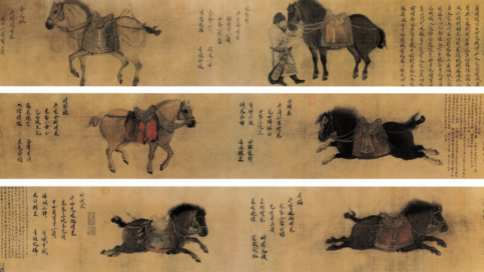
Culture & Sports
22:28, 16-Jan-2017
Chinese museum demands return of antiques from US
Updated
10:35, 28-Jun-2018

A museum in Shaanxi Province has asked for the return of two horse bas reliefs illegally sold overseas and displayed at a US museum currently.
In its official WeChat public account, the Zhaoling Museum made its announcement last Wednesday, demanding the University of Pennsylvania Museum of Archaeology and Anthropology to return two pieces of "Zhaoling Liujun" (the six stone horses of Zhao Mausoleum).

Bas Relief of “Quanmaogua” “Curly” / official website of University of Pennsylvania Museum Photo
Bas Relief of “Quanmaogua” “Curly” / official website of University of Pennsylvania Museum Photo
The six stone horse reliefs, commissioned by Emperor Taizong (reign 627-649 CE) of the Tang dynasty (618- 907 CE),were presumably completed in 649 CE, the time of his death.
In 636 CE, Emperor Taizong selected a mountain, northwest of the capital, Chang’an (now Xi’an), to bury his Empress and to serve as his own necropolis. He ordered images of his six favorite horses, selected from military victories that secured him the crown, to be carved in stone.
He named and composed a laudatory poem for each one. Upon his death, the six stone horse reliefs were placed along the east and west sides of the “spirit path” at the North Gate, the back exit of the tomb complex named Zhaoling or Zhao Mausoleum.

Bas Relief of “Saluzi” or “Autumn Dew” / official website of University of Pennsylvania Museum Photo
Bas Relief of “Saluzi” or “Autumn Dew” / official website of University of Pennsylvania Museum Photo
The six stone horse reliefs were removed from the Mausoleum in two groups between 1913 and 1917. Four remain in China at the Beilin Museum in Xi’an. The other two were sold illegally and came to the Penn Museum as a loan in 1918. They were later purchased by Eldridge R. Johnson, an entrepreneur who donated them to the Museum in 1921.
In the Zhaoling Museum statement, it says returning the two antiques to China “is most reasonable” as Penn Museum “has long been dedicated to global cultural heritage protection.”
The stone reliefs have a unique place in Chinese art and sculptural history, with its realistic depiction and exquisite carving techniques, which bear historical significance among the greatest Chinese monarchs.
915km

SITEMAP
Copyright © 2018 CGTN. Beijing ICP prepared NO.16065310-3
Copyright © 2018 CGTN. Beijing ICP prepared NO.16065310-3